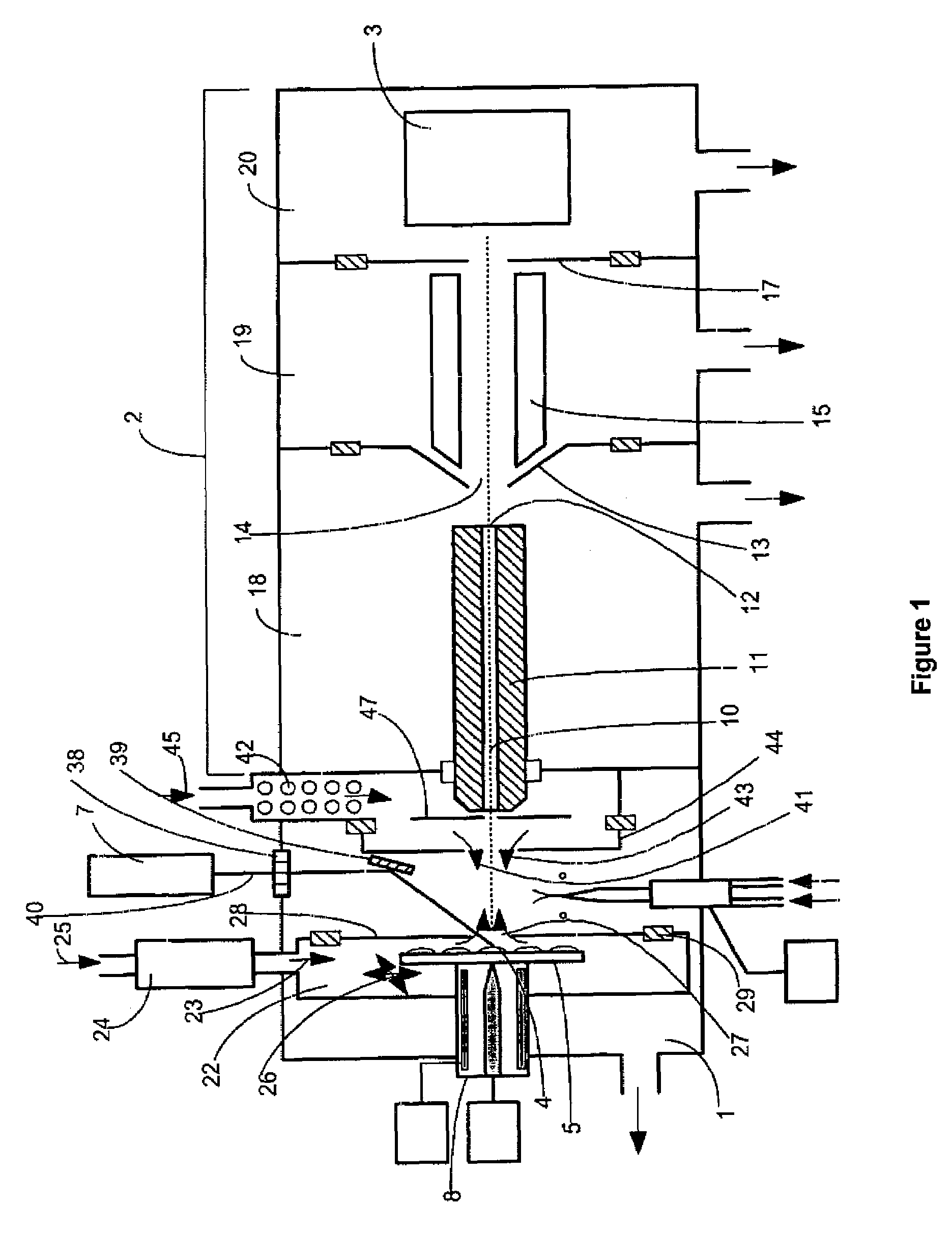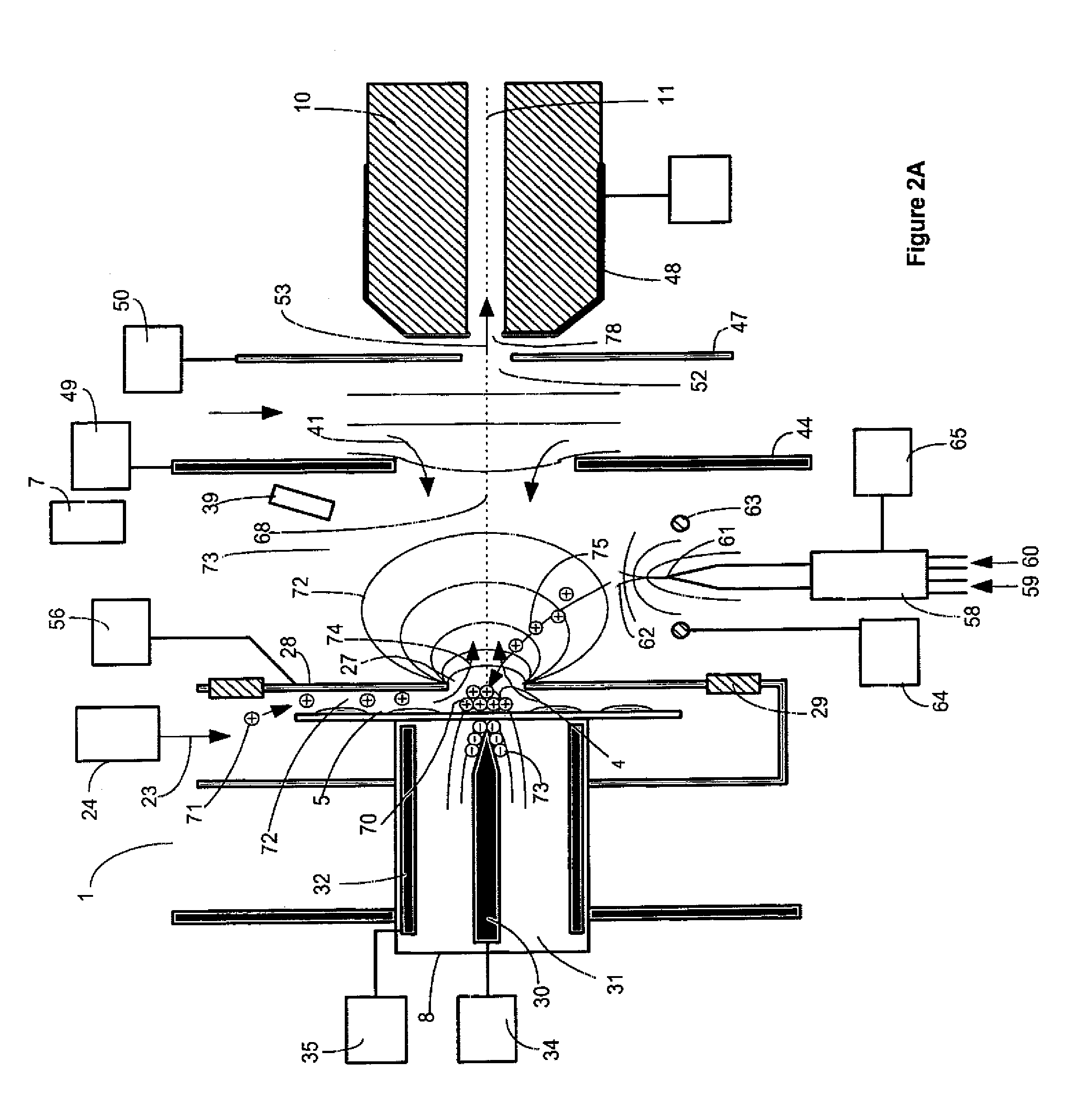Laser desorption ion source
a technology of laser pulse and ion source, which is applied in the direction of particle separator tube details, separation process, and dispersed particle separation, etc., can solve the problems of inefficient ap-maldi, lack of time-sequenced optics with laser pulse limit ion extraction and transmission efficiency, and inefficient atmospheric pressure optics with this device, etc., to achieve efficient extraction and increase the ionization efficiency of a sample
- Summary
- Abstract
- Description
- Claims
- Application Information
AI Technical Summary
Benefits of technology
Problems solved by technology
Method used
Image
Examples
Embodiment Construction
[0048]A preferred embodiment of the invention comprising an atmospheric pressure Laser Desorption Ionization source with sample surface charging is diagrammed in FIG. 1. Operating details for Laser Desorption Ionization source 1 are diagrammed in FIGS. 2A through 2D. Laser Desorption Ionization (LDI) source 1 interfaced to vacuum system 2 comprising ion transfer optics and mass to charge analyzer with detector 3, produces ions from sample 4 on target plate 5. A portion of the laser desorption ion population produced is focused into bore 10 of capillary 11. Ions exit capillary bore 10 at capillary exit end 12 into vacuum and are accelerated in a free jet expansion of neutral background gas flowing through capillary bore 10 from atmospheric pressure ion source 1. Capillary 11 may comprise a dielectric capillary with conductive electrodes on the entrance and exit faces, a heated electrically conductive capillary, a nozzle, an orifice or an array of orifices into vacuum. Ions pass throu...
PUM
 Login to View More
Login to View More Abstract
Description
Claims
Application Information
 Login to View More
Login to View More - R&D
- Intellectual Property
- Life Sciences
- Materials
- Tech Scout
- Unparalleled Data Quality
- Higher Quality Content
- 60% Fewer Hallucinations
Browse by: Latest US Patents, China's latest patents, Technical Efficacy Thesaurus, Application Domain, Technology Topic, Popular Technical Reports.
© 2025 PatSnap. All rights reserved.Legal|Privacy policy|Modern Slavery Act Transparency Statement|Sitemap|About US| Contact US: help@patsnap.com



